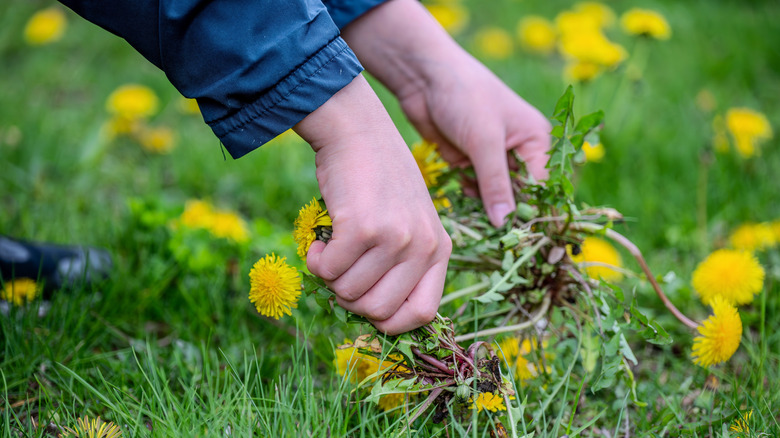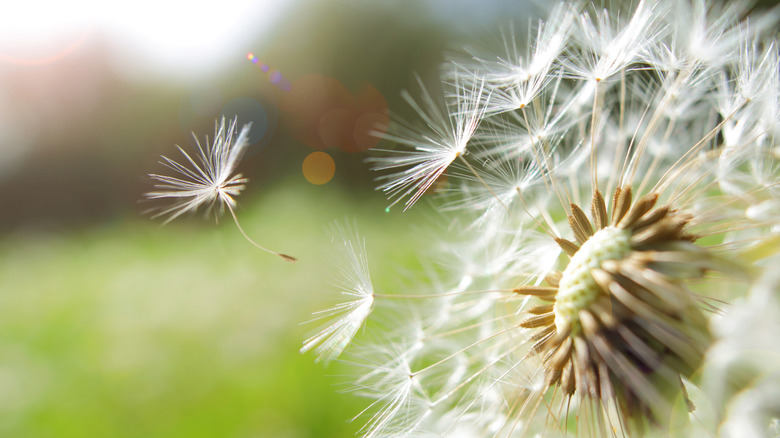Why Your Yard Is Filled With Dandelions (And Your Neighbor's Isn't)
A yard full of dandelions can tell you a lot about your lawn's condition. If your grass is covered in these pretty but annoying weeds while your neighbor's remains a pristine green, you're probably wondering what gives. It's not luck — it's lawn health. Dandelions thrive in stressed, compacted, or nutrient-poor soil. If your grass is patchy, mowed too short, or rarely fertilized, it leaves room for weeds to take root — and dandelions are often among the first to move in. These pretty perennials are incredibly hardy. In early spring, they're some of the first flowers to bloom — offering pollen to insects like honeybees. The familiar yellow flower dries into a slender green stalk before transforming into a fluffy white seed head, ready to scatter up to 100 seeds with a single gust of wind.
That means even one dandelion can quickly multiply into hundreds, especially if your lawn can't crowd them out. While your neighbor's yard might be blocking seeds with healthy, thick turf, yours may be rolling out the red carpet. So yes, dandelions can blow in — but they only stay if conditions are right. Keeping weeds under control is a crucial summer lawn care task you shouldn't skip, but to stop the cycle at its root (pun intended), you'll need to shift your focus to nurturing a lawn that naturally keeps them out.
What causes dandelions to take over your yard (and how to stop them)
Dandelions aren't just persistent — they're strategic. Their deep taproots can survive harsh conditions, and their seeds spread with barely any effort. Once those seeds land in sunlit, moist soil, they take root quickly, often deeper than your average weed. Left unchecked, those roots grow stronger and are harder to remove yearly. That's why pulling them rarely works unless you remove the entire root — and why your best defense is prevention. The dandelion life cycle also explains why timing matters. In spring, yellow blooms appear early, feeding pollinators and producing seeds fast. The seed heads — those white balls we all loved to wish on as kids — get blown between yards and even across neighborhoods.
One overlooked flower can quickly create hundreds of new weeds. To break the cycle, treat your lawn with pre-emergent herbicide early in the season to block seeds from sprouting. Use post-emergents on visible weeds. Aerate compacted soil, fertilize regularly, and reseed with aggressive turfgrass to crowd out future invaders. Even adding a hedge or low fence can help stop wind-blown seeds from taking hold. In short, dandelions are only part of the problem. If your lawn is struggling, it's time to strengthen the whole system — not just spot-treat the symptoms — because each fluffy white head releases seeds that can drift into nearby yards, creating more work for neighbors who are trying to keep their lawns weed-free. Ignoring dandelions doesn't just affect your space — it's downright unneighborly. Whichever route you take to get rid of them, make sure you keep some dandelions aside to make tea.

